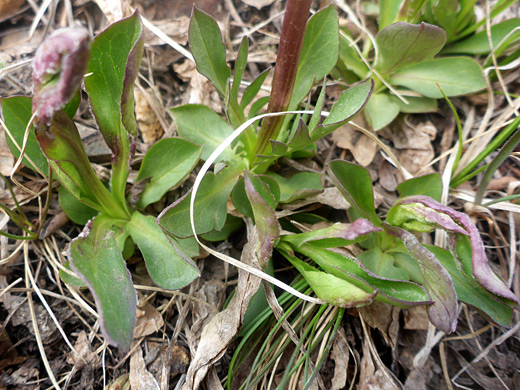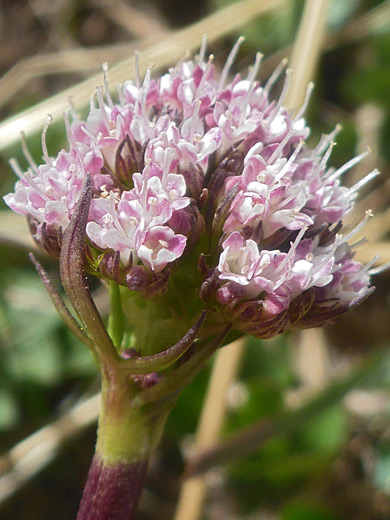Common name:
Sharpleaf valerian
Family:
Scientific name:
Valeriana acutiloba
Main flower color:
Range:
The Rocky Mountain states and all states to the west; least common in Washington
Height:
Up to 2 feet
Habitat:
Coniferous woodland, meadows, rocky hillsides, from 6,500 to 9,000 feet
Leaves:
Basal and opposite along the stem; oblong to spatulate, up to 3 inches long and 1.5 inches wide. The few stem leaves are pinnately lobed
Season:
May to August
Stems of valeriana acutiloba are often reddish, and clustered, growing vertically upwards to heights of around 2 feet. They are usually hairless, but may have a sparse covering of very short, spreading hairs. Basal leaves and the lowest pair of stem leaves are undivided, while leaves higher up the stem are pinnately lobed, and the lateral lobes are sharp-pointed. Lateral lobes are much narrower than the terminal lobe. Upper stem leaves are sessile; those lower down have short stalks.
Flowers are arranged as a dense, compact cluster, gradually elongating as they mature. Flowers are either staminate or pistillate, on the same plant; the former are held upright, the latter somewhat drooping. Both types of flower have purple calyces and white to pale pink corollas, with five lobes. Stamens are exserted.
Flowers are arranged as a dense, compact cluster, gradually elongating as they mature. Flowers are either staminate or pistillate, on the same plant; the former are held upright, the latter somewhat drooping. Both types of flower have purple calyces and white to pale pink corollas, with five lobes. Stamens are exserted.
All Contents © Copyright The American Southwest | Comments and Questions | Contribute | Site Map





